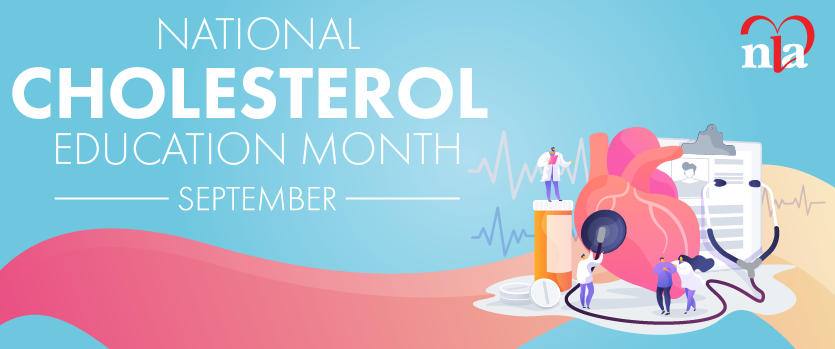You can’t miss it. At the mall, at the gym, in your office, the percentage of older Americans is growing. By the year 2020 there will be more than 55 million Americans older than 65.1 Medically, we know not to treat kids just like “little adults” and we should have this same respect for differences in the management of older adults. This should apply to both our pharmaceutical and nutritional recommendations.
Age is the single biggest risk factor for cardiovascular disease (CVD) and, not surprisingly, age is associated with other risk factors, as well. It is important for providers to be familiar with the trends and prevalence of risk factors in older adults as they may affect treatment plans, including lifestyle recommendations. Comorbidities that should be considered in these discussions with older adults include diabetes mellitus and metabolic syndrome, hypertension, obesity, dyslipidemia, and sarcopenia.
Diabetes
The diabetes rate for Americans over age 65 is startling, having climbed to more than 25 percent.2 Not only is the diabetes rate higher in older adults, but the glucose and insulin response to a glucose challenge is higher for the elderly, even in nondiabetics. 3 Not surprisingly, this response is associated with higher intramuscular and liver triglycerides in the elderly, as well.
The rate for metabolic syndrome in the elderly varies depending on the specific waist criteria used. However, a study comparing three criteria found more than 55 percent of adults ages 60 to 69 have metabolic syndrome.
Hypertension
Age also is the biggest risk factor for hypertension. Centers for Disease Control and Prevention (CDC) data show that the rate of hypertension in adults over the age of 75 is 66.7 percent for women and 78.5 percent for men.
Obesity
Obesity rates are skyrocketing in older adults, just as in the rest of the population. Peak obesity rates are found in older adults between ages 65 and 74, with rates falling after age 75.
Dyslipidemia
Overall, cholesterol decreases with age, but this is weighted by the large decrease in cholesterol for men after age 60. For women, age presents a significant predictor for increased cholesterol. Women have an increase in both lowdensity lipoprotein cholesterol (LDL-C) and triglycerides with age.
Sarcopenia
Another health concern of aging is loss of muscle mass, or sarcopenia. A refined definition and diagnostic criteria recently were developed by the European Working Group on Sarcopenia in Older People (EWGSOP). The EWGSOP provided a working definition of sarcopenia as “a syndrome characterized by progressive and generalized loss of skeletal muscle mass and strength with a risk of adverse outcomes such as physical disability, poor quality of life, and death.”7 The diagnostic criteria they proposed were low muscle mass and low muscle function (either low strength and/or low physical performance).
Exercise
Not surprisingly, exercise improves risk factors in older adults as well as their younger counterparts. The increase in glucose and insulin response in the elderly can be improved with exercise as it is with younger adults.8 This effect has been found for both endurance and strength training.9 Even low-intensity exercise has been shown to improve blood pressure in older adults.10 Exercise has been shown to have a modest, positive impact on lipids in the elderly, with the most significant changes seen with triglycerides.11 Exercise, specifically strength training, has been shown to improve sarcopenia even in the frail elderly.
Dietary Recommendations
The dietary interventions that would be recommended for all of these aging concerns are the same: a focus on highquality protein, limiting or eliminating refined carbohydrates and sugar, and realfood sources of dietary fat. A reminder is warranted that there are only three macronutrients; consequently, changes to one will influence the consumption of the others.
Protein
Currently, the Recommended Daily Allowance (RDA) for protein is 0.8 gr protein/kg/day for all adults. There have been many recent opinions and consensus statements that call for a higher level of protein consumption as we age, specifically
for lean body mass preservation. Many have recommended a goal of 1.0–1.5 gr protein/kg/day.13 These higher levels make sense for the elevated triglycerides and insulin resistance seen in older adults. Protein does not generally increase glucose in non-diabetic individuals.14 Protein also has been shown to induce satiety and will lead to a reduced percentage of carbohydrates in the diet, beneficial for triglycerides.
The type and intake pattern of protein also is an important consideration. It has been suggested that an intake of 25–30 gr of protein per meal is required for maximum muscle protein synthesis 13. This would correspond to 3 or 4 ounces of meat or fish. Branched-chain amino acids (BCCA), especially leucine, have been shown to promote muscle synthesis.15 The best sources of BCAAs are meat, chicken, fish, dairy products, eggs, and soy. Recent evidence has supported the use of β-hydroxy β-methylbutyric acid (HMB), a leucine metabolite, as supplementation for muscle mass synthesis for a variety of aging-related diseases.
Carbohydrates
High-carbohydrate diets cause an elevation of serum triglycerides. The increased CVD risk associated with elevated triglycerides has called into question the decades-old recommendations for a “low-fat diet.” In fact, the 2015 Dietary Guidelines for Americans have backed away from the low-fat recommendation.17 However, the guidelines still recommend three servings of refined carbohydrates per day to meet micronutrient sufficiency.18 The micronutrients could be better found in the protein sources above and allow for elimination of refined carbohydrates in any older adult with elevated triglyceride levels. Recommended sources for carbohydrates for older adults with dyslipidemia would be non-starchy vegetables, nuts, seeds, modest amounts of beans, and whole fruit and dairy.
Fats
Trans fats have been clearly linked to worsening lipids and CVD risk and should be avoided by all adults.19 Controversy still exists as to the role that saturated fats play in cardiovascular disease, with several recent meta-analyses showing no association. For older adults with diabetes or elevated triglyceride levels, a diet higher in total fat and protein may be beneficial. If the patient has concomitant elevations in LDL-C cholesterol, fat sources could include a higher intake of mono and polyunsaturated fats. These fat sources include: olive oil, fish, nuts and seeds, and avocados. When asked about the biggest barrier to advising older adults with diabetes, certified diabetes educator and registered dietitian Theresa Link said, “phobia of fat.”
“Patients who are attempting to avoid total fat will unintentionally increase their carbohydrate intake and this can be very harmful to their atherogenic dyslipidemia and glycemic parameters,” Link said.
Lifestyle choices are important throughout the lifespan. Many worsening cardiovascular risk factors that come with age make lifestyle counseling in older adults an important part of any lipid practice.
Take-Home Points
• More than 25 percent of older adults have diabetes mellitus and more than 55 percent have metabolic syndrome.
• Triglycerides in women increase significantly with age.
• Exercise improves CVD risk factors in older adults as it does in young adults.
• Sarcopenia is a significant risk to older
adults, including those who suffer from obesity.
• A “low-fat” diet can worsen atherogenic dyslipidemia, especially in patients with diabetes and metabolic syndrome, because of the increased carbohydrate intake.
• A higher total daily protein intake may
be appropriate for many older adults to prevent muscle mass loss.
• Advice to restrict total fat should be reconsidered for older adults.
Disclosure statement: Dr. Hallberg has participated in advisory activities with Atkins Corp.






.jpg)
.png)












